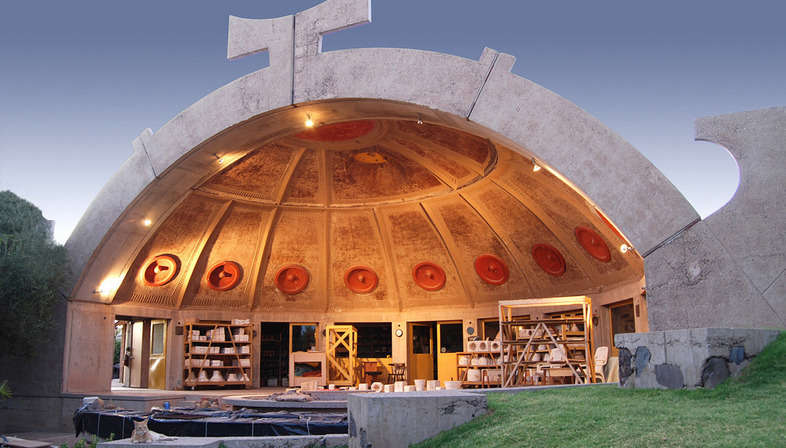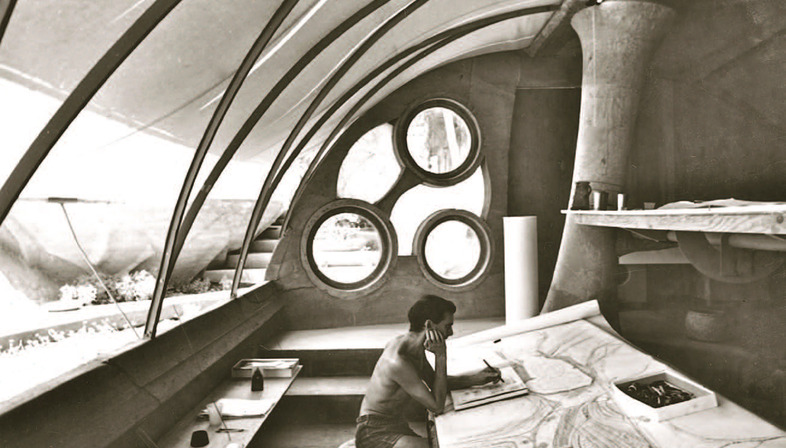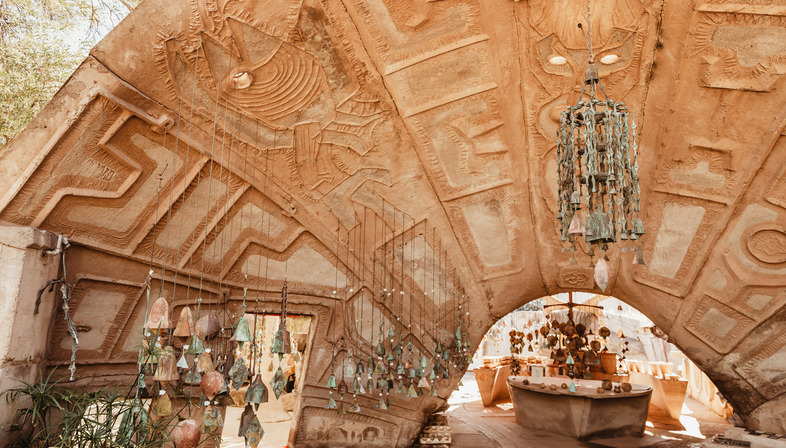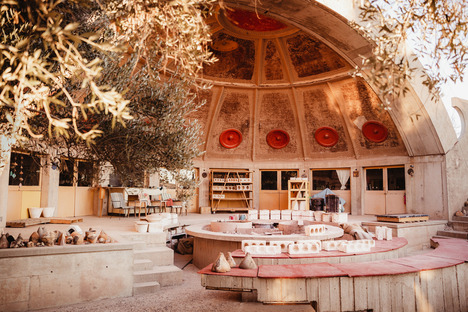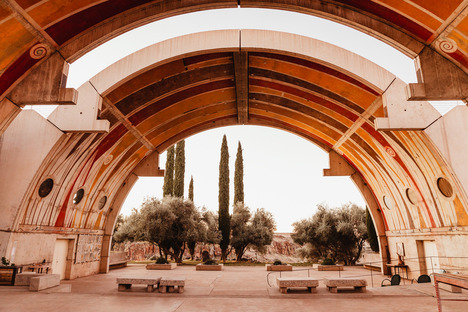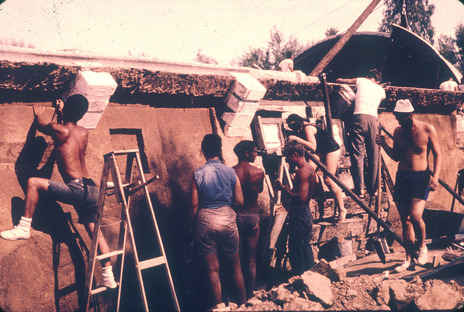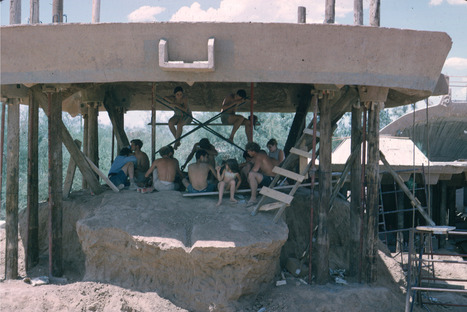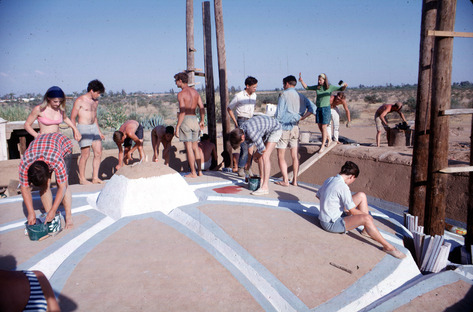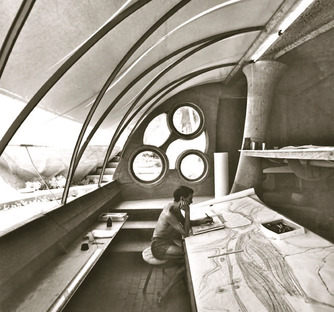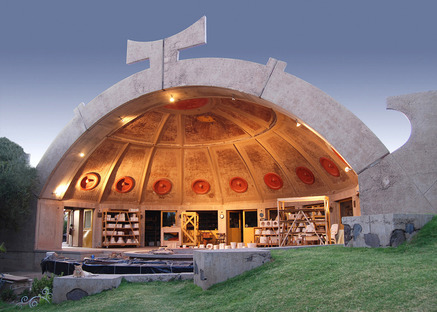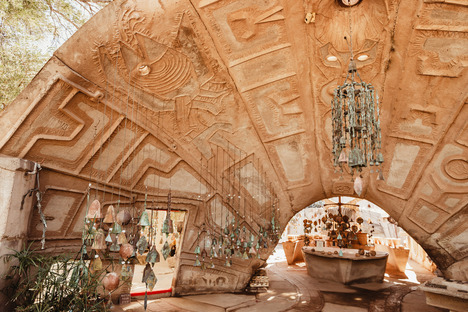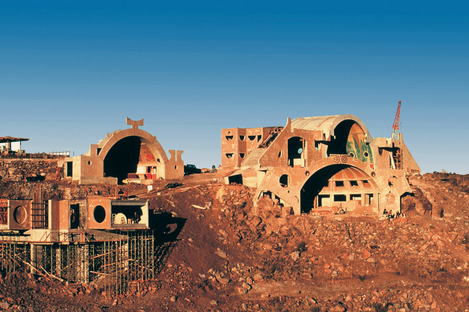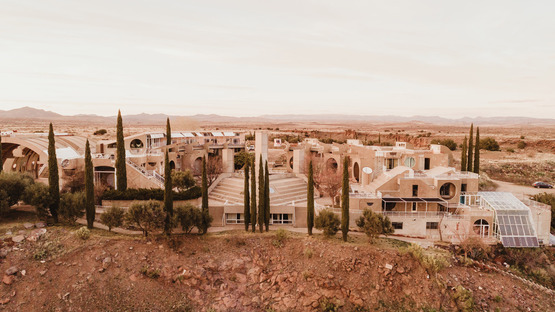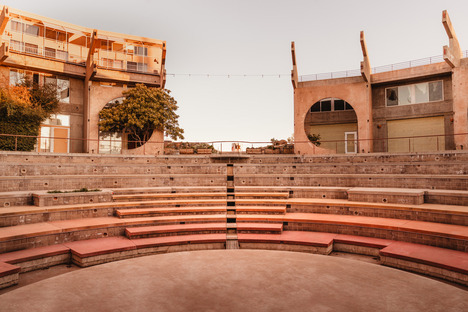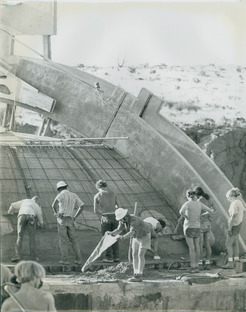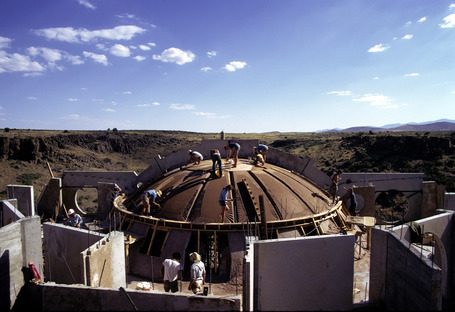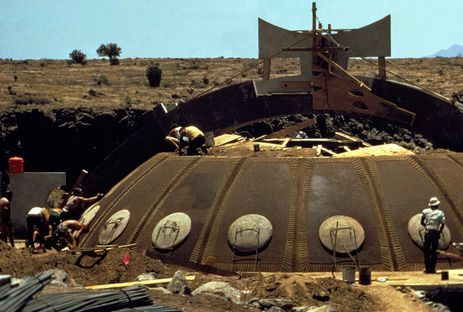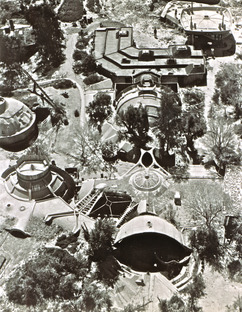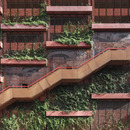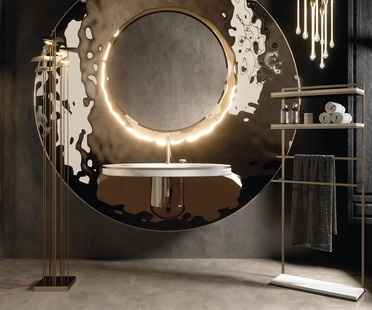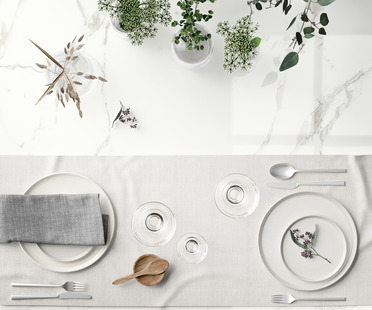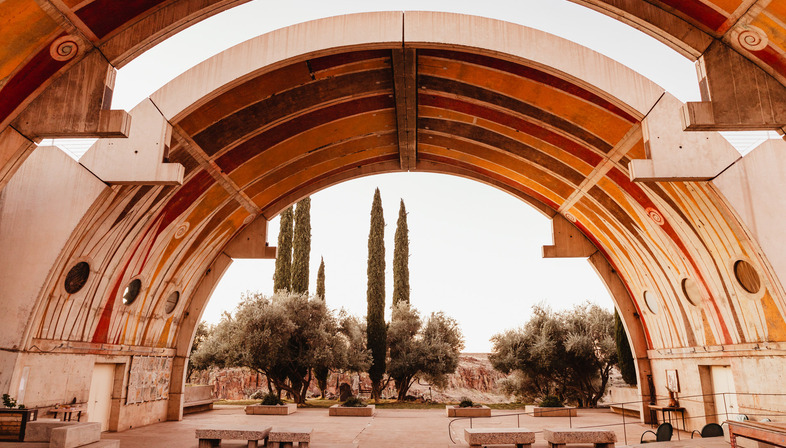 Imagine moving in a cityscape filled with a long sequence of billboards and advertisements projecting with cliché one-liners the dizzying frenzy of a dominating consumerist culture: ‘get away and enjoy it all’. The corporate ideals of 1970 reflected the American Dream of that period: a rapidly growing capitalist society, where real estate developers promoted a way of life based on the possibility of a single dwelling, a small garden, a swimming pool, a car, broadening the desire towards an individualistic carefree life, often with little or no concern for ecology. As so beautifully filmed in Michelangelo Antonioni’s Zabriskie Point, the “city was obsessed with images and movement in the midst of a massive, shattering transformation”. Los Angeles, for example, became not an environment for human interaction but a place for cars and buses. New forms of single-family constructions started to dramatically expand in terrains far from the metropolis, where land’s cost was affordable and easily profitable. Sunny Dune Corporation, a company that appears in the film, as a symbol of these new suburban homes, is visually represented in several situations with a clearly critical, denigrative intent, as when are emphasized the life-sized plastic dolls inhabiting these idealized homes, with large windows framing the panorama over the Death Valley of a short commercial video, created for promotional purposes by the group. Antonioni shows with great eloquence the negative aspects of this paradoxical super-modernity and consumerism, wisely offering an escape from this oppressing concrete context, which doesn’t dialogue with nature but rather tries to dominate it, towards a freedom in the vastness of the desert. Michelangelo Antonioni knew another maestro, a philosopher who, like him, equally concerned with the alarming effect of these drastic transformations, was trying to find an alternative way.
Imagine moving in a cityscape filled with a long sequence of billboards and advertisements projecting with cliché one-liners the dizzying frenzy of a dominating consumerist culture: ‘get away and enjoy it all’. The corporate ideals of 1970 reflected the American Dream of that period: a rapidly growing capitalist society, where real estate developers promoted a way of life based on the possibility of a single dwelling, a small garden, a swimming pool, a car, broadening the desire towards an individualistic carefree life, often with little or no concern for ecology. As so beautifully filmed in Michelangelo Antonioni’s Zabriskie Point, the “city was obsessed with images and movement in the midst of a massive, shattering transformation”. Los Angeles, for example, became not an environment for human interaction but a place for cars and buses. New forms of single-family constructions started to dramatically expand in terrains far from the metropolis, where land’s cost was affordable and easily profitable. Sunny Dune Corporation, a company that appears in the film, as a symbol of these new suburban homes, is visually represented in several situations with a clearly critical, denigrative intent, as when are emphasized the life-sized plastic dolls inhabiting these idealized homes, with large windows framing the panorama over the Death Valley of a short commercial video, created for promotional purposes by the group. Antonioni shows with great eloquence the negative aspects of this paradoxical super-modernity and consumerism, wisely offering an escape from this oppressing concrete context, which doesn’t dialogue with nature but rather tries to dominate it, towards a freedom in the vastness of the desert. Michelangelo Antonioni knew another maestro, a philosopher who, like him, equally concerned with the alarming effect of these drastic transformations, was trying to find an alternative way. 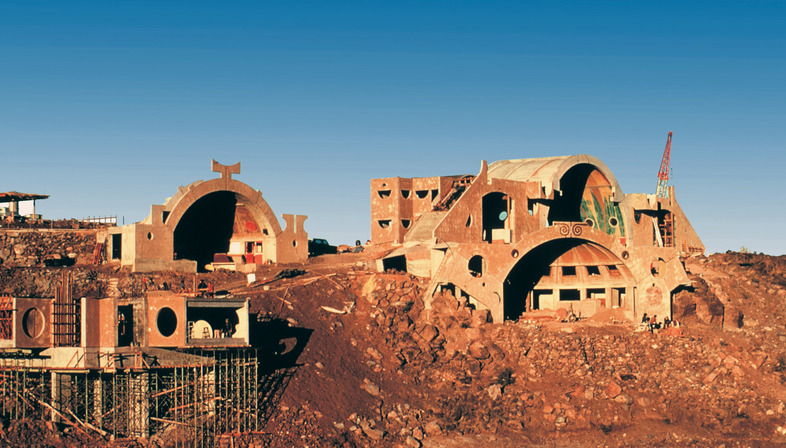
Returned to Italy in a small town on the Amalfi Coast, Vietri sul Mare, he has an interesting opportunity: the possibility of designing one of his organic creations, unfortunately few in his native land, the ceramic factory ‘Solimene'. The undulating and sinuous building, as carved into the rock and overlooking the sea, covered by an attractive thermal insulating membrane formed by the pattern of circular bases of waste amphorae and vases, in simple terracotta or in a copper green color glazed, still remains today as an exceptional testimony of “an architecture that screams the craft made by hands”. Sculptor and artist particularly fascinated by ceramics, he learns its processing techniques, always maintaining a passionate involvement in craftsmanship.
In these years, with incessant and feverish dedication, he immerses himself in his research and theorization of an architecture that forms a whole with urban planning. Conceived in this new meaning, that wants architecture to be inseparably linked to ecology, it assumes a decisively anti-materialistic, if not essential character, seeking to satisfy, more authentic and more spiritual human needs. The madness of super-consumerism paralyzes consciousness and knowledge, and someone must bring awareness, addressing attention to the alarming situation. He draws, sculpts, and experiments with low-energy design forms and produces huge scrolls on which he represents his imaginative prototypes of future cities, with constructions that today we find more and more frequent in certain current proposals considered futuristic. The incredible amount of works and annotations will be consecrated in an exhibition dedicated to him at the Corcoran Gallery in Washington, attracting an extraordinary interest from the public. As his reputation heightens, his insights are listened with reverence in the cultural and artistic fields accrediting him with large research grants, invitations to exhibitions and conferences all around the world.
A long period of time has passed since the experience in Taliesin West, more than 20 years, and, from that abrupt rift with his mentor, the apprentice is now at an advanced stage of his path. Paolo Soleri disagrees with Wright’s vision for the American city: a sprawling suburb, with low-rise single-use buildings, devouring land and resources, with strong dependence on the car, a model that appears to him as a real “engine for consumption”. On several occasions he declares his disappointment and proposes a radical reorganization as an alternative to that urban expansion, which spreads horizontally like a wildfire, greedily absorbing energy, invading and erasing all traces of green nature. “Cities only a few stories high, stretching outward in unwieldy sprawl for miles. As a result, they literally transform the earth; turning farms into parking lots, wasting enormous amounts of time and energy transporting people, goods, & services over their expanses”.
To this waste of earth and energy, he finds the solution in implosion, as a grouping of all the various disintegrated and exploded dimensions. Like nature, the city must be organic, it must be based on the same operating principles of biological organisms, tracing their internal coherence and the ability to harmoniously adapt to the environment: large animal communities, such as bees or ants, can be the models to follow. This contraction can only occur by rethinking the space according to a three-dimensional urban development, articulated in height, capable of favoring social relations and community work. “In nature, as an organism evolves it increases in complexity and it also becomes a more compact or miniaturized system. Similarly a city should function as a living system". The tall and multifunctional buildings will determine a concentrated city, where people will not have to travel great distances to meet, and will drastically reduce the use of cars. Architects must not limit themselves only to the contingent needs of man and the choice of materials, but aim to reach a new model paradigm of life, more in balance with nature and consequently more spiritual.
The concept, “the city is the necessary tool for the evolution of humanity”, fuels the projects that he wishes to realize, and with enormous efforts he tries to raise the necessary funds. Achieving a certain success, along with repercussions in economic terms, in the beginning of the 1970s, he acquires a plot in the desert and materializes the dream of an existence: in an area of high altitude, with the help of a group of enthusiastic volunteers, he starts the construction of Arcosanti, 'The City in the image of Man', as he defines it in a black volume more than 2ft wide, dedicated to the entire work and published the previous year. An ambitious realization, characterized by a radical urban and human vision, that arises from the desire to give life in an embryonic form to a small community, contrasting the ‘planetary hermitage’, typical of the urban peripheral sprawl that with "family houses at sidereal distances breaks families". ‘An alternative to consumerism’, is how he envisions his 'city of the sun', refusing to consider it a defined but rather as a constantly evolving nucleus. A small fragment proposed to be replicated if it will be accepted by society.
The experimental city of Arcosanti, as a prototype of arcology, intends to create an architecture harmoniously merged with ecology. A real 'urban laboratory', based on the idea of a virtuous interaction between nature and man, man and his fellow men, and on a wise use of local resources without altering the balance of an ecosystem capable of regenerating itself. A concept that hinges on a simple conduct, that must not waste anything, and exploit only those resources that can be reused. An attempt at an ideal collective life, self-financed by its own production, handcrafted in an environmentally friendly context, where each building is constructed with one’s own hands, using almost entirely local materials, where a passive energy system, which exploits solar radiation through technology and the use of highly insulating materials, is able to ensure efficiency and thermal well-being. A new urban reality that opposes a hedonistic ethic, which makes humanity believe to find happiness in consumption, rather than understanding that they will become slave of it. “The art of survival runs in the blood of a man who based his existence on the essential: ‘when I was a boy,’ he says, ‘I used to read Jack London. The one thing that impressed me was his idea of being able to survive on almost nothing. Waste has always been a sin to me’".
The philosophy of Soleri, unheard 'prophet of the desert', has never been so relevant as in these moments of urgent environmental and social crisis. Prophets, as we well know, anticipate times too distant and difficult to imagine, and their life is generally studded with bitterness and hard sacrifices. We should have listened when he repeatedly warned: "We are unable to live because we are going against nature", "the use and consumption of the land’s resources, and not its capital, is essential if we want to keep our options open for the future ". And when he finally was able to develop his idea of urbanity, sadly in a limited dimension, in his theoretical considerations all these problems have been very carefully examined and studied. The result is far from being the realization of a utopia, because as its creator-demiurge states: "utopia is a delusion, the delusion of the pursuit of perfection”. The community in Arcosanti, even if it has not grown according to Soleri’s expectations, as certain critics point out, remains an extremely significant testimony of a sustainable existence from both an environmental and social point of view. Soleri was able to share a dream, offering to those, who actively contributed in construction of this new city, a sense of belonging. Those, who participated, remember with great enthusiasm and pride, the feeling of being actively part in the creation of something important. A sensation of strong freedom and great energy animates the extremely heterogeneous community, made up of individuals, who remained permanently, forming a family with relative children and others only passing through.
Once the project had begun, there is another commendable aspect: it has been given the opportunity to set up everyday life at one’s own discretion, without deliberately interfering in anyone's private orbit. Rules had been accepted beforehand, and after that, everything depended on an individual sense of responsibility. This behavior of Soleri is not surprising, reflecting the same way he dealt with his students, towards whom he didn’t feel like a teacher-educator, limiting himself to transmit his knowledge in form of apprenticeship. "I'm not a teacher," he says. “My way is the old way of the bottega. The master works and everybody does what the master does. For me that is the only way. "
Virginia Cucchi
Credits:
Paolo Soleri, Arcosanti, Cosanti Foundation: https://www.arcosanti.org/
Arcosanti, cover, 1-2, 4, 5 : Photo di Jessica Jameson/ Courtesy of Cosanti Foundation
Historical - Arcosanti 3, 6 : Photo di Ivan Pintar/ Courtesy of Cosanti Foundation, 8 : Photo di Annette del Zoppo/ Courtesy of Cosanti Foundation
Historical - Cosanti: 9 : Photo di Ivan Pintar/ Courtesy of Cosanti Foundation, 11, 10, 12 : Photo di Colly Soleri/ Courtesy of Cosanti Foundation
Paolo Soleri: Photo 13 di Stuart A. Weiner/ Courtesy of Cosanti Foundation
Sketch: Photo 14: Courtesy Archive Arcosanti/ reposted Archive FN: Arcosanti, l'utopia di Paolo Soleri
Photo 15: reposted Archive FN: Arcosanti for talk Jeff Stein, Photo of Tomiaki Tamura











